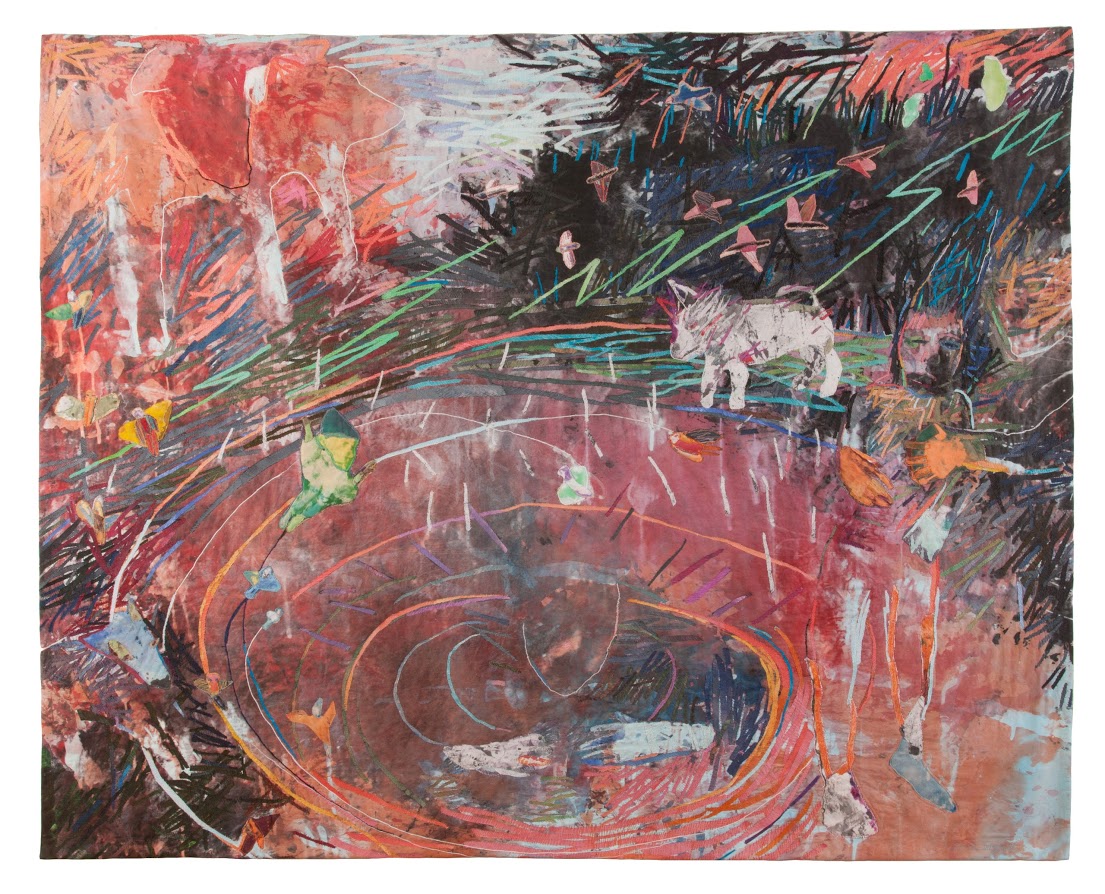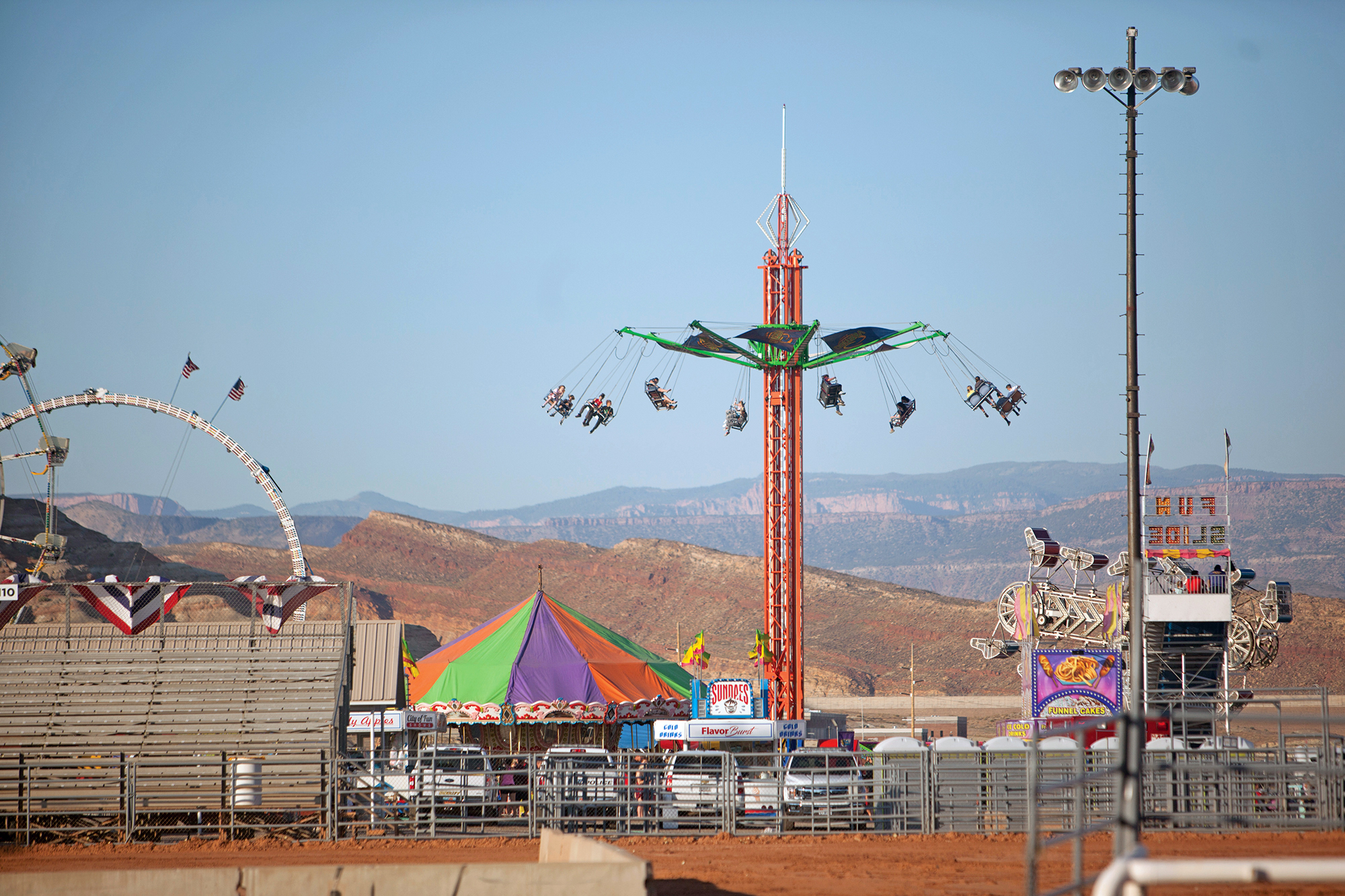
St. George Art Museum hosts Studio Art Quilt Associates’ “Layered Voices”
By Deborah Reeder
Open Nov. 10, 2018–March 9, 2019 at the St. George Art Museum, “Layered Voices” is an exhibition of 23 art quilts created by members of Studio Art Quilt Associates. Today, the group defines an art quilt as a creative visual work that is layered and stitched or that references this form of stitched layered structure. Layers are everywhere. They become apparent when we plumb the earth’s surface. They make archeological digs to discover the history of civilizations, explore human anatomy, dress for the weather, dig in freshly fallen snow, and count rings in the stump of a tree. Layers are abstract, too. We find them in language when we ponder the hidden meanings in novels, poems, conversations, and puns. And of course, layers are integral to the definition of an art quilt. Textile artists achieve layering many ways in their artwork. Multi-hued fabrics frequently begin the layering process. The character of the layers can be changed by selecting sheer, opaque, reflective, tinted or toned fabric. Enhancement of the layers can be achieved with paints, dyes, bleaching, distressing, embellishments, and stitching. These are the tools at the artist’s disposal to create layers of light, shade, depth, and color. Entrants were encouraged to interpret the use and concept of layering in their work. The layering of the media may be literal, inferred, or even digital. Realistic, representational, wearable art, and abstract work were considered for this exhibit.
As the introduction stated, layers are everywhere. Layers are inherent in the definition of a quilt: two or more layers, held together by stitch. They can be literal, conceptual, or both, so we invite viewers to look for the myriad iterations of layers in these works. The artworks ask us to contemplate the additive and subtractive experiences of time and memory as we observe the additive and subtractive techniques used to create each piece. They can and should be viewed with an eye to both the layering of image, meaning, and form, and to the individual voice of each artist. We ask viewers to take the time to ask questions about the artists’ decisions, and to make connections between the works to further deepen the experience. There are no right or wrong answers to the questions posed, and keep in mind that individual pieces may connect to others in more than one way.
Studio Art Quilt Associates is a nonprofit organization whose mission is to promote the art quilt through education, exhibitions, professional development, documentation, and publications. Founded in 1989 by an initial group of 50 artists, the group now has over 3,000 members worldwide: artists, teachers, collectors, gallery owners, museum curators and corporate sponsors. Since its establishment, the organization has grown alongside the evolution of the quilt as an art form.
Layered Voices is as much about the unique voice each person expresses as it is about layers. How are these voices heard? The juror states, “Transformative processes brought about by natural forces, politics, social interactions, emotional states, and spiritual convictions were recurring themes in many artist statements. It became apparent that an exploration of the nature of time — particularly as it relates to the environment, memory, and change — was a unifying theme in the 23 pieces I chose for this exhibition.” In viewing the artwork, ask how the layering of images, meaning, and form works together to convey a message.
Linda Colsh’s “Defiant” invites conversation about aging, strength, stubbornness, and independence versus feebleness. Penny Mateer’s and Martha Wasik’s “This Revolution Will Not Be Televised #13 Protest Series” uses a traditional quilt format as the foundation for imagery highlighting the institutionalized racism still prevalent in the United States today. Kristin La Flamme’s “Death Shroud For Democracy” references ancient textiles to speak to current political woes. All the pieces in the exhibit, and these two in particular, confront our assumptions of quilt as object for warmth and comfort and use that dissonance to invite deeper consideration.

“I paint fabric, then search for narratives within the colors and shapes,” Dinah Sargeant states. “Between what I see and what I intuit, a story unfolds.” What story does her piece, “Premonition,” suggest to you? Compare Sargeant’s painted piece to Roxanne Lasky’s layered and stitched coat, “Migration, Souvenir,” which also seems to voice a narrative.
Which voices in this exhibit speak loudly, and which convey a quiet message? When might one or the other be most effective? An artist’s voice can be heard through the materials they choose to work with, their unique aesthetic, or what subject matter they explore. What might your voice be?
Articles related to “St. George Art Museum hosts Studio Art Quilt Associates’ ‘Layered Voices'”
Kayenta presents “Framed,” a satire about art, marriage, and ambition
SUU hosts Ellen Eagle at Art Insights on weaving color with pastels



